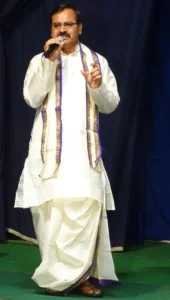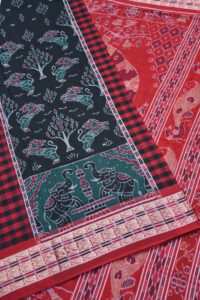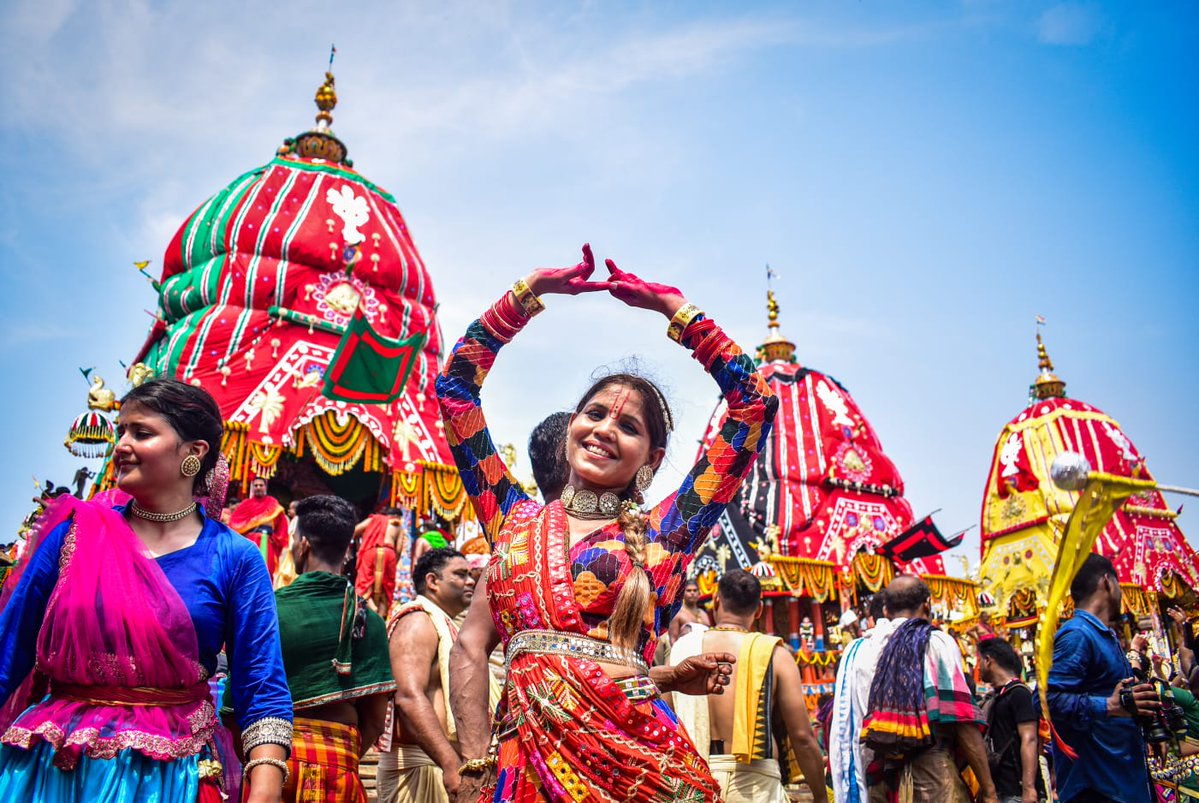Odisha Traditional Dress and Culture: A Glimpse into the Rich Heritage
Odisha, an eastern state of India, is known for its rich cultural heritage, traditional attire, and vibrant festivals. The state boasts a unique blend of art, music, dance, and customs, deeply rooted in its history and traditions. Let’s explore the traditional dress and culture of Odisha.
Traditional Dress of Odisha

Men’s Traditional Attire:
Men in Odisha traditionally wear a Dhoti along with an Angavastram (a shawl-like cloth) draped over the shoulders. The dhoti is usually made of cotton, making it suitable for the humid climate. In formal and festive occasions, men also wear a Kurta along with their dhoti. Another popular attire is the Gamcha, a lightweight cotton towel, often draped around the neck.
During special occasions and temple visits, men prefer wearing silk dhotis with intricate borders, often paired with a Panchakacham-style drape.

Women’s Traditional Attire:
Women in Odisha primarily wear the Sambalpuri Saree, a handwoven silk or cotton saree known for its intricate ikat patterns. Other popular sarees include Bomkai Saree, Berhampuri Saree, and Kotpad Saree. These sarees are not only symbols of elegance but also represent the craftsmanship of Odisha’s weavers.
For festive occasions and temple visits, women wear red and yellow sarees with traditional jewelry such as silver anklets, bangles, and nose rings, enhancing their ethnic charm. Married women often apply Sindoor (vermilion) on their foreheads, which is considered auspicious.
Cultural Heritage of Odisha
Odisha is a land of diverse traditions, dance forms, art, and festivals, which reflect the deep-rooted cultural essence of the state.
Dance and Music:
Odisha is famous for its classical dance form, Odissi, one of the oldest dance forms in India. It is characterized by graceful movements, sculpturesque poses, and expressive gestures. Apart from Odissi, folk dances like Chhau, Dalkhai, and Gotipua are widely performed in various regions of the state.
Music in Odisha ranges from classical Odissi music to tribal folk tunes. Traditional musical instruments like the Mardala, Jodi Sankha, and Mahuri play an essential role in Odissi performances and religious ceremonies.
Festivals and Celebrations:
Festivals in Odisha are grand and culturally significant. The most famous festival is the Rath Yatra of Lord Jagannath, held in Puri, where millions of devotees gather to witness the divine chariot procession. Other major festivals include Durga Puja, Raja Parba, Makar Sankranti, and Nuakhai.
The state also celebrates Boita Bandana, a festival where small boats are floated in rivers and water bodies to honor the maritime history of Odisha.
Handicrafts and Art Forms:
Odisha is known for its traditional handicrafts such as Pattachitra paintings, silver filigree work, and stone carvings. The artisans of Raghurajpur village are famous for their exquisite paintings that depict mythological stories and intricate designs.
Cuisine of Odisha:
The traditional cuisine of Odisha is simple yet delicious. Staple dishes include Dalma (a lentil and vegetable dish), Pakhala Bhata (fermented rice), Chhena Poda (a sweet made of cottage cheese), and Rasagola. The state’s cuisine is largely influenced by temple food, with the Mahaprasad of Jagannath Temple being the most famous offering.
Religious and Spiritual Influence:
Odisha is home to numerous temples, the most iconic being the Jagannath Temple in Puri. Other significant temples include the Lingaraj Temple, Konark Sun Temple, and Mukteshwar Temple. These architectural marvels reflect the state’s deep spiritual roots and rich architectural history.
Conclusion
The traditional dress and culture of Odisha stand as a testament to its historical grandeur and artistic excellence. Whether it is the elegant handwoven sarees, the captivating dance forms, or the rich traditions, Odisha continues to preserve its unique cultural identity while embracing modernity. This timeless heritage makes Odisha a treasure trove of traditions that continue to inspire generations.
—


